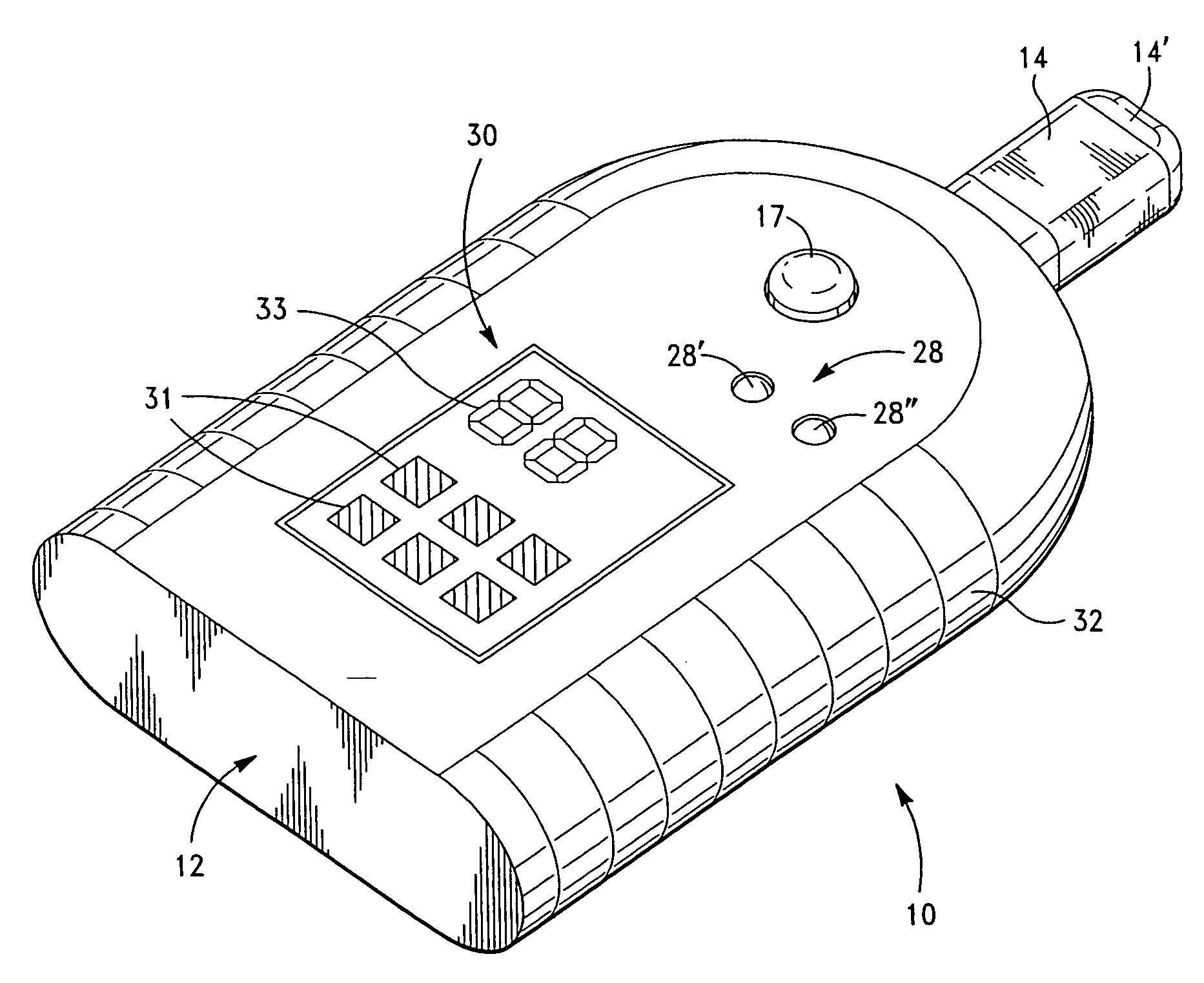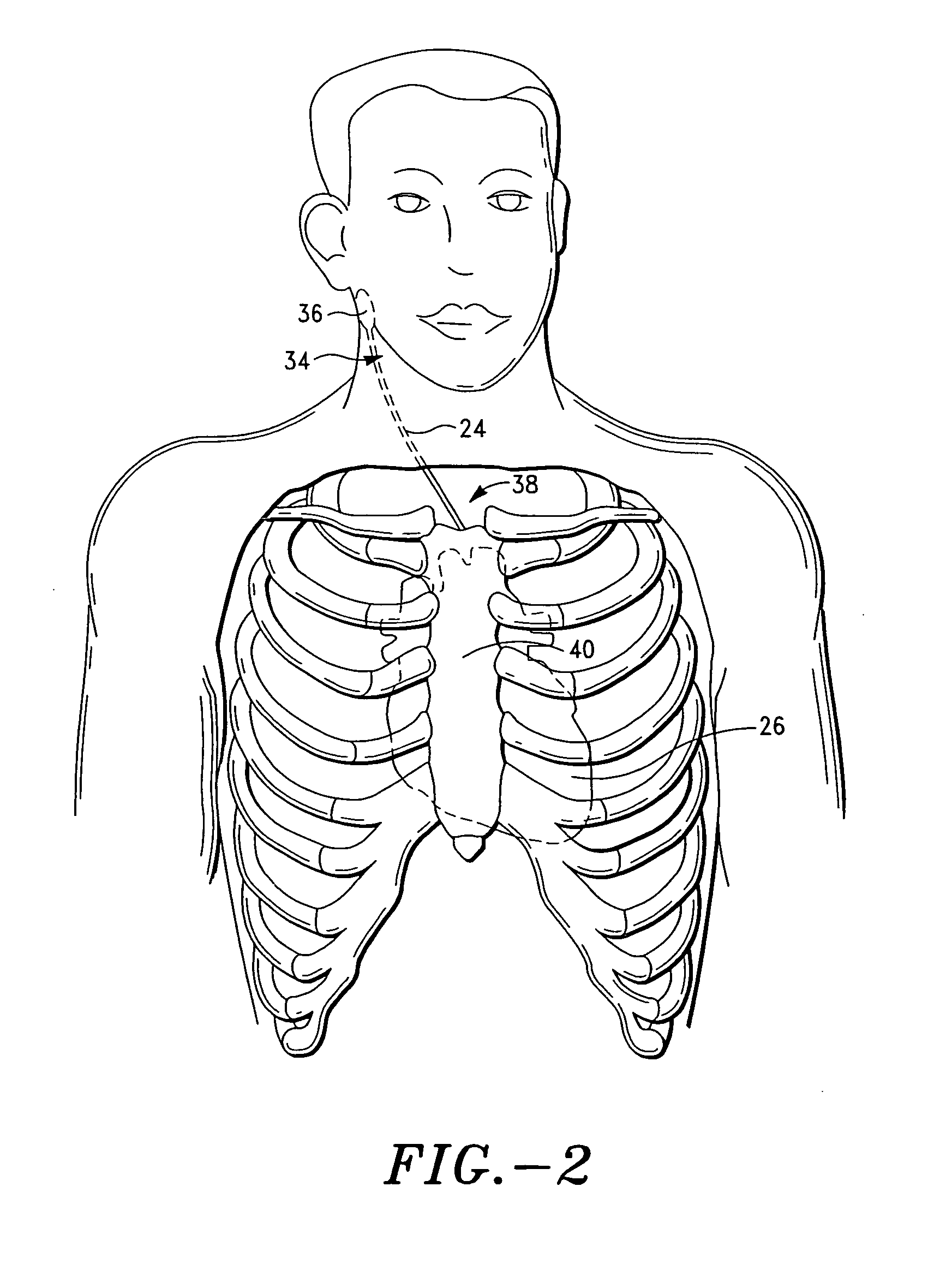Device and procedure to treat cardiac atrial arrhythmias
a technology of atrial arrhythmia and device, applied in the field of devices and procedures to treat cardiac atrial arrhythmia, can solve the problems of insufficient blood circulation, increased speed of ventricles, and serious performance deficit of ventricles
- Summary
- Abstract
- Description
- Claims
- Application Information
AI Technical Summary
Benefits of technology
Problems solved by technology
Method used
Image
Examples
Embodiment Construction
EMBODYING THE BEST MODE OF THE INVENTION
[0028]For the purpose of promoting an understanding of the principles of the invention, references will be made to the embodiments illustrated in the drawings. It will, nevertheless, be understood that no limitation of the scope of the invention is thereby intended, such alterations and further modifications in the illustrated device, and such further applications of the principles of the invention illustrated herein being contemplated as would normally occur to the one skilled in the art to which the invention relates.
[0029]The invention comprises to a device and method for non-invasively controlling human and animal hearts in a manner that treats emergency arrhythmias. It is used to treat the right side carotid-body and carotid-sinus which reside at the junction of the internal and external carotid artery which travels between the heart and the brain. These structures are found within the neck and arise so that they can be stimulated through...
PUM
 Login to View More
Login to View More Abstract
Description
Claims
Application Information
 Login to View More
Login to View More - R&D
- Intellectual Property
- Life Sciences
- Materials
- Tech Scout
- Unparalleled Data Quality
- Higher Quality Content
- 60% Fewer Hallucinations
Browse by: Latest US Patents, China's latest patents, Technical Efficacy Thesaurus, Application Domain, Technology Topic, Popular Technical Reports.
© 2025 PatSnap. All rights reserved.Legal|Privacy policy|Modern Slavery Act Transparency Statement|Sitemap|About US| Contact US: help@patsnap.com



